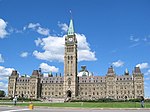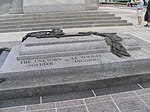Ottawa Electric Railway
1891 establishments in OntarioDefunct town tramway systems by cityElectric railways in CanadaLight rail in CanadaRail transport in Ottawa ... and 3 more
Railway lines closed in 1959Railway lines opened in 1891Street railways in Ontario
Ottawa Electric Railway Company was a streetcar public transit system in the city of Ottawa, Canada, part of the electric railway streetcars that operated between 1891 and 1959. Ottawa once had tracks through downtown on Rideau Street, Sparks Street and others, and extended outside of the downtown core to provide services that helped form communities such as Westboro, Old Ottawa South and The Glebe. Prior to this, starting in 1866, public transportation was provided by Ottawa City Passenger Railway Company, a horse-drawn tram service. The O.E.R. was taken over by the Ottawa Transportation Commission in 1948, which was itself succeeded by OC Transpo in 1973.
Excerpt from the Wikipedia article Ottawa Electric Railway (License: CC BY-SA 3.0, Authors).Ottawa Electric Railway
Elgin Street, (Old) Ottawa Rideau-Vanier
Geographical coordinates (GPS) Address Nearby Places Show on map
Geographical coordinates (GPS)
| Latitude | Longitude |
|---|---|
| N 45.42451 ° | E -75.694817 ° |
Address
Pont Plaza Bridge
Elgin Street
K1P 1C7 (Old) Ottawa, Rideau-Vanier
Ontario, Canada
Open on Google Maps







